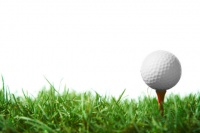Difference between revisions of "The World of LGBTQ Golf"
| Line 55: | Line 55: | ||
* [[LGBTQ Presence in the Equestrian World]] | * [[LGBTQ Presence in the Equestrian World]] | ||
* [[LGBTQ Tennis]] | * [[LGBTQ Tennis]] | ||
| + | * [[World Sports Champions Who Identify as LGBTQ]] | ||
==Further Reading/Research== | ==Further Reading/Research== | ||
Revision as of 14:47, 6 August 2017
Golf has been one of the fastest growing sports internationally for the past twenty years. It is a high profile sport in the developed world, with plenty of media attention, glamour, prominent athletes, sponsors, and money. Players include amateurs and professionals who range across all age groups and demographics. It is fascinating to look at the participation of the LGBTQ community in this sport because there are several contradictions.
On one hand, there are no out gay professional golfers. This is disappointing because there are certain to be gay players in the professional golf circuit. What is holding back the male gay players from coming out?
On the other hand, lesbian and transgender professional golfers are very prominent and have made a significant mark in the sport. The two top female players in the sport's history have been lesbian. Golfer Babe Didrikson Zaharias of the United States was voted as the female sports person of the Twentieth Century, while today's Australian player Karrie Webb has tied Zaharias for the most professional wins ever and is the first person in history to win all four Ladies Professional Golfers Association (LPGA) majors. These are remarkable achievements. Other lesbian legends in the sport include Patty Sheehan, Sandra Haynie and Jane Geddes. Many of these individuals are in the World Golf Hall of Fame and the LPGA Hall of Fame, and have received other prominent honours.
On the transgender front, Denmark's Mianne Bagger was the first transgender golfer to compete in a professional tournament (2004 Australian Womens Open). American Lana Lawless led the movement to allow transitioned players to compete in the LPGA when she sued the organization, forcing them to drop the word 'female' from their membership restriction. Both remain activists within the sport.
Golf is not a team sport, but rather consists of individual players and their caddies. As such, golfers rely heavily on sponsors and career winnings to help carry on their professional playing activity by supporting their travel, living and incidental expenses. This may, in part, explain the complete absence of a gay professional golfer. In contrast, many of the lesbian players rank highly in the Top 10 money-earners list.
The golf world has reached out to the LGBTQ community to engage its participation in an effort at diversity, inclusion, and to maintain the spectacular growth in the sport itself. For example, the annual German Rainbow Open has been in operation for over twelve years and draws professional LGBTQ golfers from around the world to compete.
Nevertheless, issues remain. Some married LGBTQ golfers report that clubs refuse to admit them as 'partners' in the club at the lower fee rate, instead asking them to pay individual member fees. There also remain instances of homophobic slurs on the greens and in the locker rooms.
We have identified the following LGBTQ golfers, hailing from Australia, Canada, Denmark, and the United States. Simply click on their names to read their fascinating biographies.
Australia
Canada
Denmark
United States
- Babe Didrikson Zaharias
- Betty Dodd
- Jane Geddes
- Sandra Haynie
- Rosie Jones
- Lana Lawless
- Mac Powell
- Kelly Robbins
- Patty Sheehan
- Muffin Spencer-Devlin
See Also
- LGBTQ Cyclists
- LGBTQ Sports Management
- LGBTQ Sports Referees and Umpires
- LGBTQ Professional and Amateur Sports Coaches
- LGBTQ Personal Trainers and Lifestyle Coaches
- Lesbian Football/Soccer Players
- The Community of LGBTQ Boxers
- Professional LGBTQ Mixed Martial Artists
- LGBTQ Presence in the Equestrian World
- LGBTQ Tennis
- World Sports Champions Who Identify as LGBTQ
Further Reading/Research
- http://theaposition.com/anthonypioppi/blog/1087/time-for-golf-to-embrace-encourage-lgbt-players
- http://www.golf.com/tour-and-news/gay-golfers-at-exclusive-army-navy-country-club
- http://www.golfdigest.com/story/are-there-gays-players-on-the-pga-tour-brandt-snedeker-says
- http://www.golfchannel.com/news/jason-sobel/what-if-tour-player-said-he-was-gay-major-champ-weighs/

